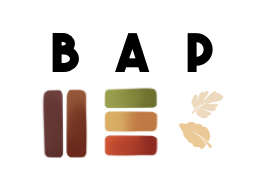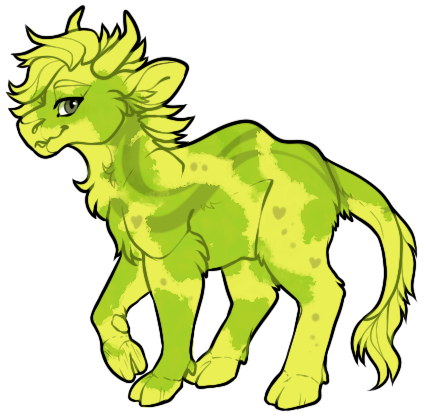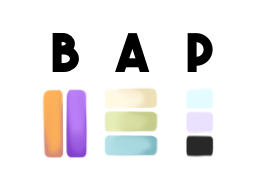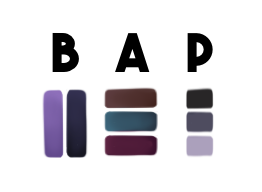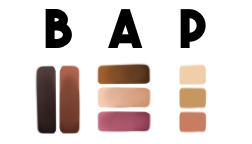Traits
Gourd Gene (Rare)
This trait grants the Dromedairy the Dawnrose colour pallette.
In breedings, this can be passed down as either a dominant or recessive gene.
All Piebald must have all colours present within their respective piebald pallette, to resemble the pattern of a gourd.
If a dromedairy has this gene as recessive, in order for offspring to obtain it the other parent must either have this gene as a dominant gene, or a recessive gene.
Cannot pass to offspring as a dominant gene if only one parent carries the recessive gene and has a 50% chance of becoming dominant if both parents have it as recessive if rolled in a breeding
Autumnal Gene (Rare)
This trait grants the Dromedairy the Dawnrose colour pallette.
In breedings, this can be passed down as either a dominant or recessive gene.
All Piebald must be drawn in leaf-shapes only. The leaf shape must resemble the one used on the colour. You cannot swap leaf shapes with different piebald colours
Click here for an example.
If a dromedairy has this gene as recessive, in order for offspring to obtain it the other parent must either have this gene as a dominant gene, or a recessive gene.
Cannot pass to offspring as a dominant gene if only one parent carries the recessive gene and has a 50% chance of becoming dominant if both parents have it as recessive if rolled in a breeding
Chimeric Gene (Rare)
Chimeric Gene allows for a Dromedairy to have two dominant colouration palettes actives at the same time.
You cannot mix and match the colours with one another.
Instead, the colourations should be treated like piebald, with one being on top of the other with gaps to show the pallette underneath.
Can be given to hybrids and can be a mix of a dominant pallette and a subtypes original pallette.
Dawnrose Gene (Rare)
This trait grants the Dromedairy the Dawnrose colour pallette.
In breedings, this can be passed down as either a dominant or recessive gene.
All accent colours will sparkle.
If a dromedairy has this gene as recessive, in order for offspring to obtain it the other parent must either have this gene as a dominant gene, or a recessive gene.
Cannot pass to offspring as a dominant gene if only one parent carries the recessive gene and has a 50% chance of becoming dominant if both parents have it as recessive if rolled in a breeding.
Prideful Gene (Rare)
This trait grants the Dromedairy the Prideful gene that works differently than most colouration traits.
In breedings, this can be passed down as either a dominant or recessive gene.
If a dromedairy has this gene as recessive, in order for offspring to obtain it the other parent must either have this gene as a dominant gene, or a recessive gene.
Cannot pass to offspring as a dominant gene if only one parent carries the recessive gene and has a 50% chance of becoming dominant if both parents have it as recessive if rolled in breeding.
Those who have this colouration have their Accent colour palette on their current colouration replaced to match any pride flag.
Unlike most Dromedairy accent colours, those with this colour palette MUST have all colours present on their accent markings.
If a Droma obtains this gene from a breeding, the owner is able to choose the flag before the breeding is completed.
Lily Pad Gene (Rare)
This trait grants the Dromedairy the Lily Pad colour pallette.
In breedings, this can be passed down as either a dominant or recessive gene.
If a dromedairy has this gene as recessive, in order for offspring to obtain it the other parent must either have this gene as a dominant gene, or a recessive gene.
Cannot pass to offspring as a dominant gene if only one parent carries the recessive gene and has a 50% chance of becoming dominant if both parents have it as recessive if rolled in a breeding.
Spring Gene (Rare)
This trait grants the Dromedairy the Spring colour pallette.
In breedings, this can be passed down as either a dominant or recessive gene.
If a dromedairy has this gene as recessive, in order for offspring to obtain it the other parent must either have this gene as a dominant gene, or a recessive gene.
Cannot pass to offspring as a dominant gene if only one parent carries the recessive gene and has a 50% chance of becoming dominant if both parents have it as recessive if rolled in a breeding.
Wine Gene (Rare)
This trait grants the Dromedairy the Wine colour pallette.
In breedings, this can be passed down as either a dominant or recessive gene.
If a dromedairy has this gene as recessive, in order for offspring to obtain it the other parent must either have this gene as a dominant gene, or a recessive gene.
Cannot pass to offspring as a dominant gene if only one parent carries the recessive gene and has a 50% chance of becoming dominant if both parents have it as recessive if rolled in a breeding.
Coco Gene (Rare)
This trait grants the Dromedairy the Coco colour pallette.
In breedings, this can be passed down as either a dominant or recessive gene.
If a dromedairy has this gene as recessive, in order for offspring to obtain it the other parent must either have this gene as a dominant gene, or a recessive gene.
Cannot pass to offspring as a dominant gene if only one parent carries the recessive gene and has a 50% chance of becoming dominant if both parents have it as recessive if rolled in a breeding.
Strawberry Gene (Rare)
This trait grants the Dromedairy the Strawberry colour pallette.
In breedings, this can be passed down as either a dominant or recessive gene.
If a dromedairy has this gene as recessive, in order for offspring to obtain it the other parent must either have this gene as a dominant gene, or a recessive gene.
Cannot pass to offspring as a dominant gene if only one parent carries the recessive gene and has a 50% chance of becoming dominant if both parents have it as recessive if rolled in a breeding.


